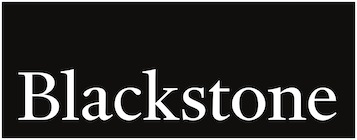
Essentials of Private Credit
Download the full brochure

Continuing Education Program
Private Credit: What You Need to Know
Growing Demand
Privately held companies focused on growth and transformation have increasingly turned to private credit as a source of capital. Working with non-bank lenders, these companies are seeking to meet their capital needs more efficiently through direct loans.
Defensive Income
Private loans are typically senior secured with meaningful cushion below in the form of junior debt and equity. Also, they typically offer floating rate coupons. These features aim to provide investors with principal preservation and high income potential.1
Core Allocation
When added to a traditional balanced portfolio of stocks and bonds, private credit can offer meaningful diversification and improve risk-return potential.2
The Basics of Private Credit
Publicly Syndicated Loans
Every business needs capital—to expand, operate, acquire a competitor, or pursue new market opportunities. Traditionally, companies borrow money from commercial banks. These banks typically sell (or “syndicate”) these loans or bonds to a large group of lenders who will own or trade these securities.
Private Credit
Private credit can offer companies a more direct and efficient way to access capital. Private credit managers raise funds directly from investors and lend to corporate borrowers in transactions that often involve a private equity firm. This direct approach—with no bank in the middle—can result in greater efficiency, confidentiality, certainty in execution, and flexibility in terms of structure for the borrower. For the investor, it can lead to stronger documentation, principal preservation, and ultimately more attractive returns.
Private Credit at the Core
Historically, private credit has helped to enhance returns, reduce volatility, and improve the income potential of traditional investment portfolios. For investors seeking defensive positioning with return potential in the face of interest rate volatility, inflation, and continued uncertainty in public markets, these characteristics may be attractive.
60/40 Portfolio
| Annualized Return | 8.9% |
| Annualized Volatility | 11.0% |
| Current Yield | 2.9% |
Portfolio with a 20% Private Credit Allocation
| Annualized Return | 9.9% |
| Annualized Volatility | 10.2% |
| Current Yield | 4.5% |
Private Credit Landscape Today
Private credit has expanded rapidly for years, in part due to bank consolidation and regulatory change in the aftermath of the Global Financial Crisis. Today, private credit represents more than 25% of the US market for below-investment-grade credit, up from 5% in the mid-2000s, and plays an important role in financing large transactions.3
This trend has been largely driven by private equity activity and companies that are seeking more flexible capital solutions.
Private Credit’s Outperformance Over Time
Historically, private credit has outperformed traditional credit segments like high yield bonds and leveraged loans, in part reflecting the premium borrowers pay for the efficiency, confidentiality, and flexibility of private capital.
Annual Returns of Fixed Income Key Indices Ranked in Order of Performance (2017-2023)
- Private Credit
- 1‑3 Month T‑Bill
- Treasuries
- Investment Grade Bonds
- Leveraged Loans
- High Yield
Key Reasons Borrowers Select Private Lending4
-
Efficiency of execution
-
Flexible structuring
-
Maintenance of confidentiality
-
Greater certainty of terms
-
Fewer public disclosure requirements


A CASE STUDY
Why Borrowers Go Private
Speed, simplicity, and flexibility: The ability of private lenders to commit capital quickly at scale can be attractive to borrowers. In the case of Park Place Technologies, a leading provider of third-party maintenance services for data center hardware, Blackstone Credit & Insurance leveraged its industry expertise and strong relationship with the private equity sponsor to lead a $2 billion loan package in March 2024. Park Place also participates in Blackstone’s Value Creation Program, where the company benefits from numerous introductions that created synergies.
Read the complete
Essentials of Private Credit


Essentials of Private Markets
Learn how assets such as private real estate, credit, and equity can fit into investment portfolios.
- Capital is at risk and investors may not get back the amount originally invested.
- Diversification does not ensure a profit or protect against losses.
- Source: Bloomberg (“High Yield”) and Pitchbook LCD (“Leveraged Loans”) as of March 2024. Preqin (“Private Credit”) as of September 2023, which is the latest data available. Private Credit market size based on AUM. Total addressable US sub-investment grade credit market defined as the aggregate of the US high yield bonds, US leveraged loans and North American private credit markets. Leveraged loans refer to broadly syndicated loans. Private Credit includes Business Development Companies (“BDCs”).
- Any investment involves a high degree of risk and should only be made if an investor can afford the loss of the entire investment. There are no guarantees or assurances regarding the achievement of investment objectives or performance and you could lose some or all of your investment.
